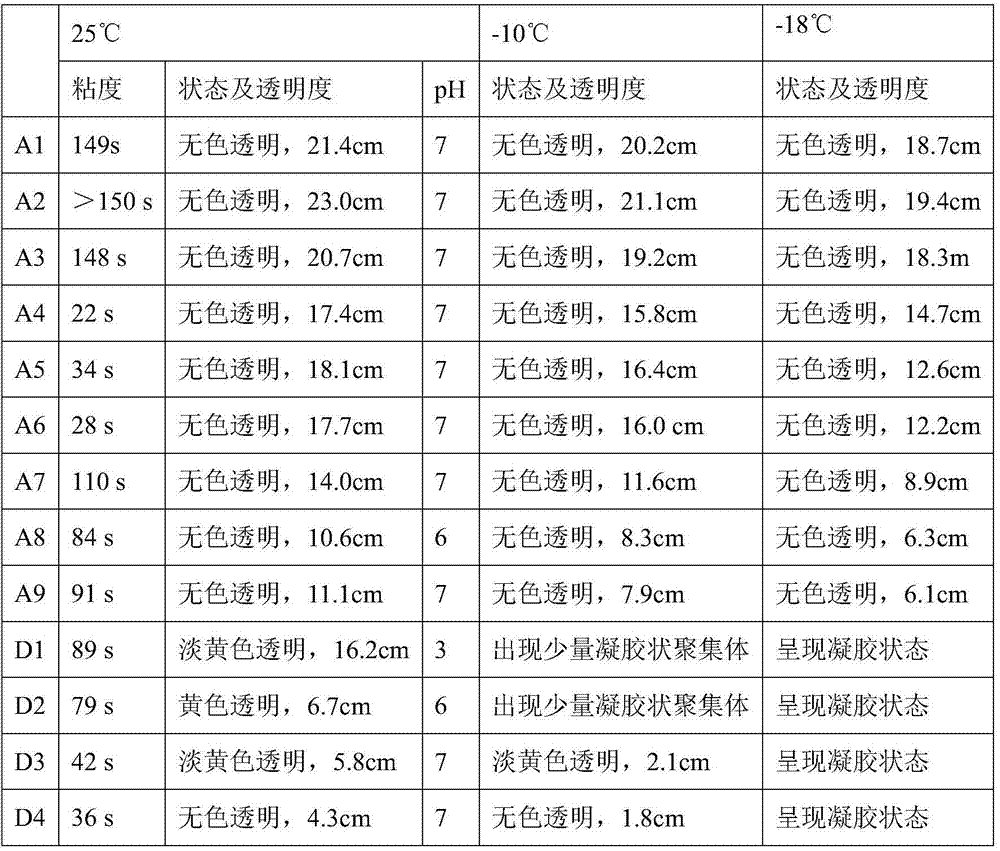A kind of preparation method of high chlorinated polyethylene
A high-chlorinated polyethylene and polyethylene technology, applied in the field of chemical synthesis, can solve the problems of poor low temperature resistance, acidic corrosion, transparency and viscosity of products, and achieve the effect of expanding the application range and reducing equipment investment costs
- Summary
- Abstract
- Description
- Claims
- Application Information
AI Technical Summary
Problems solved by technology
Method used
Image
Examples
Embodiment 1
[0034] A preparation method of high chlorinated polyethylene, the preparation method comprises the following steps:
[0035] (1) Add 30Kg compound polyethylene into the reaction kettle containing reaction medium and auxiliary agent, stir for 20min, the weight ratio of compound polyethylene to reaction medium and auxiliary agent is 1:10:0.1, and the reaction medium is 10 % hydrochloric acid aqueous solution;
[0036] (2) Chlorine is added to the reactor to carry out a chlorination reaction to obtain a high-chlorinated polyethylene crude product. The conditions of the chlorination reaction include: first reacting at 125° C. for 1.5 hours, then cooling to 88° C. for 1.5 hours; In the reaction, the amount of feeding chlorine is 4 times of the weight of the compounded polyethylene;
[0037] (3) The high-chlorinated polyethylene crude product obtained in step (2) is subjected to deacidification treatment, and the deacidification treatment includes: transporting the high-chlorinated...
Embodiment 2
[0041] A preparation method of high chlorinated polyethylene, the preparation method comprises the following steps:
[0042] (1) Add 30Kg compound polyethylene into the reaction kettle containing reaction medium and auxiliary agent, stir for 10-20min, the weight ratio of compound polyethylene to reaction medium and auxiliary agent is 1:13:0.05, the reaction medium 5% hydrochloric acid aqueous solution;
[0043] (2) Chlorine is added to the reaction kettle to carry out chlorination reaction to obtain the crude product of high chlorinated polyethylene. The conditions of chlorination reaction include: first react at 120°C for 2 hours, then react at 90°C for 1 hour; 6 times the weight of compounded polyethylene;
[0044] (3) Deacidifying the crude product of high chlorinated polyethylene obtained in step (2), the deacidification process includes: transporting the crude product of high chlorinated polyethylene to the agitator, adding 2 times the weight of water for washing, adding...
Embodiment 3
[0048] A preparation method of high chlorinated polyethylene, the preparation method comprises the following steps:
[0049] (1) Add 30Kg compound polyethylene into the reaction kettle containing reaction medium and auxiliary agent, stir for 20min, the weight ratio of compound polyethylene to reaction medium and auxiliary agent is 1:15:0.2, and the reaction medium is water ;
[0050] (2) Chlorine is added to the reactor to carry out the chlorination reaction to obtain the crude product of highly chlorinated polyethylene. The conditions of the chlorination reaction include: first reacting at 130°C for 1.5 hours, then reacting at 85°C for 2 hours; 5 times the weight of compounded polyethylene;
[0051] (3) Deacidifying the crude product of high chlorinated polyethylene obtained in step (2), the deacidification process includes: transporting the crude product of high chlorinated polyethylene to the agitator, adding 3 times the weight of water for washing, adding Sodium hydroxid...
PUM
| Property | Measurement | Unit |
|---|---|---|
| particle size (mesh) | aaaaa | aaaaa |
Abstract
Description
Claims
Application Information
 Login to View More
Login to View More - R&D
- Intellectual Property
- Life Sciences
- Materials
- Tech Scout
- Unparalleled Data Quality
- Higher Quality Content
- 60% Fewer Hallucinations
Browse by: Latest US Patents, China's latest patents, Technical Efficacy Thesaurus, Application Domain, Technology Topic, Popular Technical Reports.
© 2025 PatSnap. All rights reserved.Legal|Privacy policy|Modern Slavery Act Transparency Statement|Sitemap|About US| Contact US: help@patsnap.com

